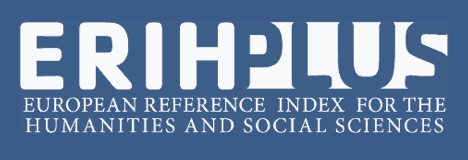Construction of geographical knowledge in quilombola school education: participatory cartography as a methodological didactic path
Abstract
The present study synthesizes the experience, evaluation and reflection of the didactic-pedagogical proposal of Participative Cartography in the teaching of Geography for Quilombola School Education. The intervention was applied in E.M.E.F. Olímpio Nogueira Lopes in Quilombo Alto Alegre in Horizonte - Ceará, and focused on the collective and participatory construction of maps using the overlay technique, using satellite images and polyester paper to represent the elements to be mapped. It is noteworthy that the construction of the Participatory Cartography in the school is a potential didactic tool to learn the conceptual and procedural knowledge of Cartography, besides, and above all, to have been an instrument to know, recognize and re-signify the knowledge about the territory, quilombola knowledge and traditions in the School space.
References
BRASIL. Diretrizes Curriculares Nacionais para a Educação Escolar Quilombola. 2012. Resolução nº 08, de 20 de novembro de 2012. Diário Oficial da União. Brasília, 2012.
BRASIL. Lei n. 9.394 de 20 de dezembro de 1996. Estabelece a Lei de Diretrizes e Bases da Educação Nacional. Brasília, 1996.
BRASIL. Lei n. 4.024 de 20 de dezembro de 1961. Fixa a Lei de Diretrizes e Bases da Educação Nacional. Brasília, 1962.
BRASIL. Parâmetros Curriculares Nacionais: Geografia. 1998. Disponível em:
CAVANCANTI, L. S. O ensino de Geografia na Escola. Campinas: Papirus Editora, 2012.
CRUZ, M. S. Uma abordagem sobre a história da Educação dos negros. In: ROMÃO, J. (Org). História da Educação do negro e outras histórias. Brasília: Ministério da Educação, Secretaria de Educação Continuada, Alfabetização e Diversidade, 2005.
DIAS, L. R. Quantos passos já foram dados? A questão de raça nas leis educacionais – Da LDB de 1961 à Lei 10.639, de 2003. In: ROMÃO, J. (Org). História da Educação do negro e outras histórias. Brasília: Ministério da Educação, Secretaria de Educação Continuada, Alfabetização e Diversidade, 2005.
EVANGELISTA, A. N. A; COSTA, J. M; ROCHA, B. T. G; ALBUQUERQUE, A. M; GORAYEB, A; SANTOS, J. O. A Cartografia e sua aplicação no conhecimento prático de comunidades urbanas vulnerabilizadas. In: GORAYEB, A; MEIRELES, A. J. A; SILVA, E. V (Org.). Cartografia Social e Cidadania: experiências de mapeamento participativo dos territórios de comunidades urbanas e tradicionais. Fortaleza: Expressão Gráfica Editora, 2015. P. 25 -38.
GORAYEB, A; MEIRELES, A. J. A; SILVA, E. V. Princípios básicos de Cartografia e construção de mapas sociais: metodologias aplicadas ao mapeamento participativo. In: GORAYEB, A; MEIRELES, A. J. A; SILVA, E. V (Org.). Cartografia Social e Cidadania: experiências de mapeamento participativo dos territórios de comunidades urbanas e tradicionais. Fortaleza: Expressão Gráfica Editora, 2015. P. 9 -24.
INCRA. Decreto regulariza território quilombola Alto Alegre e Adjacência / Base no Ceará. Disponível em:
PASSINI, U. E; PASSINI, R; MALUSZ, S. T. (Org). Prática de ensino de Geografia e Estágio Supervisionado. 2. Ed. São Paulo: Contexto, 2010;
SANTOMÉ, Jurjo Torres. As culturas negadas e silenciadas no currículo. In: SILVA, Tomaz Tadeu da. (Org.). Alienígenas na sala de aula: uma introdução aos estudos culturais em educação. Trad. Tomaz Tadeu da Silva. Petrópolis: Vozes, 1995.SILVA, T. D. Educação Escolar Quilombola no senso da Educação Básica. Rio de Janeiro: IPEA, 2015.
SUCUPIRA, T. G. Quilombo Boqueirão da Arara, Ceará: Memórias, Histórias e Práticas Educativas. 2015. 107 f. Dissertação (Mestrado em Educação) – Universidade Federal do Ceará, Fortaleza, 2015.
Keywords

This work is licensed under a Creative Commons Attribution-NonCommercial 4.0 International License.
Policy Proposal for Free Access Journals
Authors who publish in this journal agree to the following terms:
a. Authors retain the copyright and grant the journal the right of first publication, with the work simultaneously licensed under the Creative Commons Attribution License which allows the sharing of the work with acknowledgment of the authorship of the work and initial publication in this journal.
b. Authors are authorized to take additional contracts separately, for non-exclusive distribution of the version of the work published in this journal (eg publish in institutional repository or as a book chapter), with acknowledgment of authorship and initial publication in this journal.
c. Authors are allowed and encouraged to publish and distribute their work online (eg in institutional repositories or on their personal page) at any point before or during the editorial process, as this can generate productive changes, as well as increase the impact and The citation of published work (See The Effect of Free Access).





















